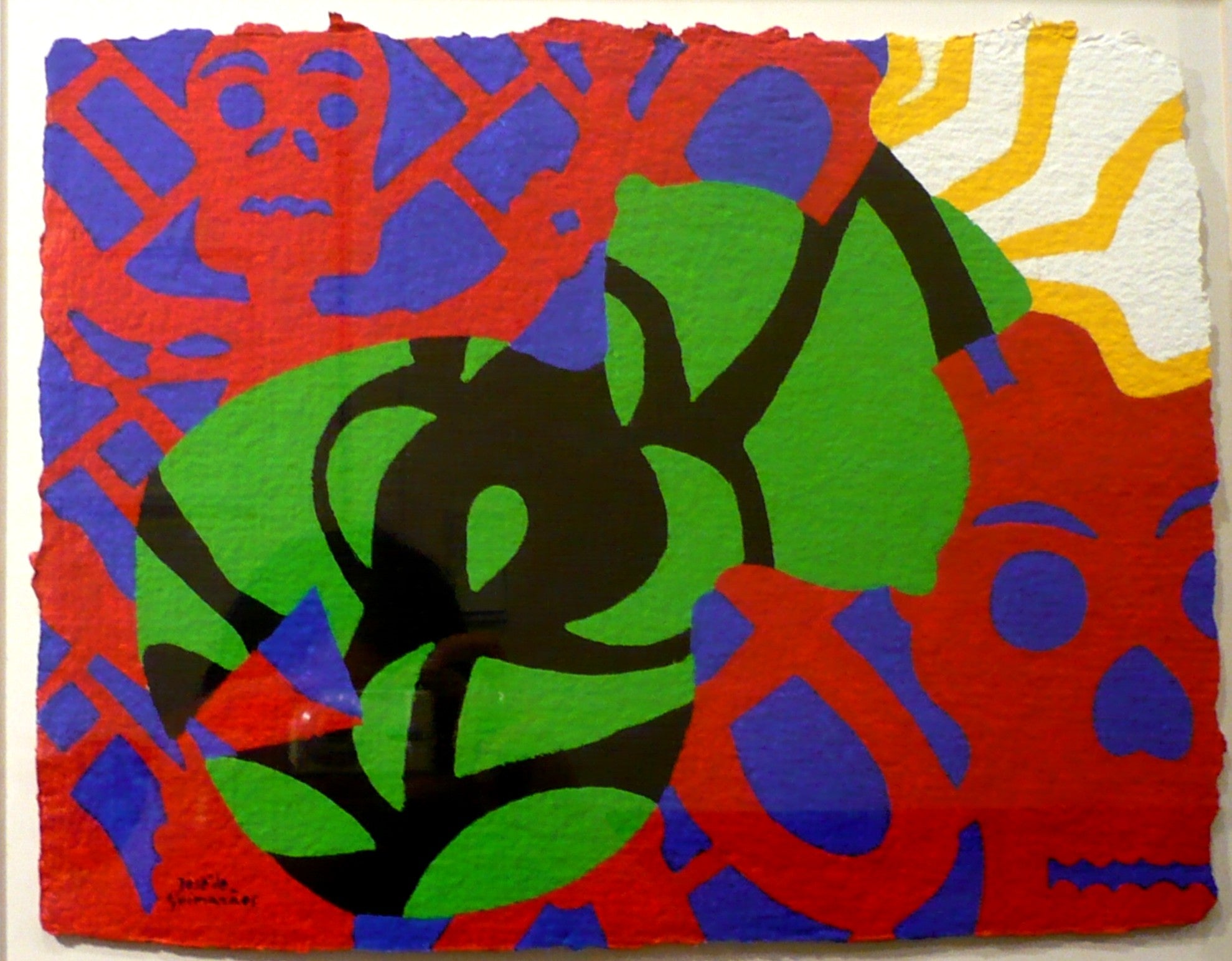
1. Artist with a long career
Jose Maria Fernandes Marques was born on November 25, 1939, in the city of Guimarães, where he lived until 1957. In 1958, already in Lisbon, he began his studies in the field of painting and drawing with Teresa de Sousa and Gil Teixeira Lopes. He attended the engraving courses at the Sociedade Cooperativa de Gravadores Portugueses where he met Hogan, Júlio Pomar, Almada Negreiros, Bartolomeu Cid dos Santos, among others. He left for Paris in 1961, when he came into contact with fauve painting, which would end up influencing him in the future. It was in this year that he adopted the pseudonym of José de Guimarães, in honor of his homeland. The following year he traveled to Italy, where he had the opportunity to see Michelangelo's frescoes and paintings by Morandi and Giorgio de Chirico. After another year in Paris, he visited Munich and found Klee, Kandinsky, the Bauhaus and Die Bruecke.In 1967, in Africa, he joined a military service commission in Angola. There, he became interested in black art and began his foray into the world of collages. Still in Luanda, he published the Manifesto to non-conformist painters - Disturbing Art - in which he stated “Get closer to life and use the materials of our time. Give beauty to steel, aluminum, concrete and plastic.” He returned to Portugal in 1974 and in 1980 he began to sculpt. In these journeys and influences of 20th century art lies the core of the art of José de Guimarães, which always continued the search for new artistic realities. In this context, he also made trips to Japan, China, Mexico or Tunisia. From all of them, he gathered important data and perspectives that permeate his works. In 2001 he received the Career Consecration Award, awarded by the Portuguese Society of Authors and, in 2009, the Grand Cross of the Order of Merit.

2. Vast and diverse production
José de Guimarães is considered one of the main Portuguese visual artists of Contemporary Art, having a vast and remarkable work in painting, sculpture and other creative activities, which makes him one of the most awarded Portuguese plastic artists. He is an artist who has been producing for many decades, so he has a vast and diverse production. From figures linked to African Art to Portuguese culture, there is an intersection of themes, in which we can find some work that awakens our eyes in a peculiar way.
3. Artworks with value for every wallet
José de Guimarães created works of art in different media, from painting, sculpture, serigraphy, collage, among others. This diversity establishes a price differentiation in his works. For example, serigraphs will have a lower value than a painting, making it easier to collect.

4. Famous in Portugal but also abroad
In Portugal, José de Guimarães had a strong involvement with the European Capital of Culture, in Guimarães, which saw the birth of the International Center for the Arts José de Guimarães (CIAJG), integrated in the Arts and Creativity Platform. The Imprensa Nacional-Casa da Moeda itself marked the European Capital of Culture through the minting of a commemorative coin by the artist. In 1990, the then President of the Portuguese Republic, Mário Soares, granted him the rank of Commander of the Order of Infante D. Henrique.
However, his career "would be defined by the discovery of distant and unusual regions, from Africa to Japan, from Mexico to China. Each of these cultures stimulated him to develop a universal language and to transmit an imaginary universe that, after all, , revives the memory of Portuguese history itself, made of enriching relationships with distant countries". His work is represented in the most relevant institutional collections in Portugal and around the world, from Europe, as well as in the United States of America, Brazil, Canada, Israel and with a special focus on Japan, where he proposes crosses with the art of non-western civilizations – African, Chinese, Mesoamerican –, an incessant search for non-verbal relationships, to which the collector's work to which he has dedicated himself for several decades is no stranger.
5. Will forever go down in history
Known by the name of the city where he was born, José de Guimarães is a figure of Portuguese art, who explored several areas from the plastic arts, through geology, engineering to archeology. Its decade-old production is characterized by strong and cheerful colors, and by the crossing of themes between animal and human, mineral and vegetable. For decades, the Portuguese artist collected African, pre-Columbian and ancient Chinese art, which is now on display at the CIAJG - Centro Internacional de Artes José de Guimarães. His career will always be remembered and revived throughout history, and his works of art will always have a significant value.

